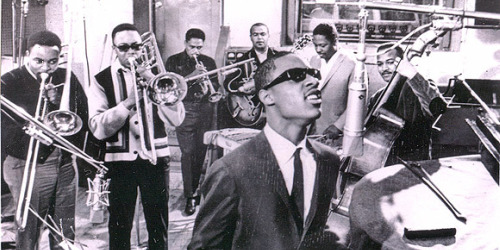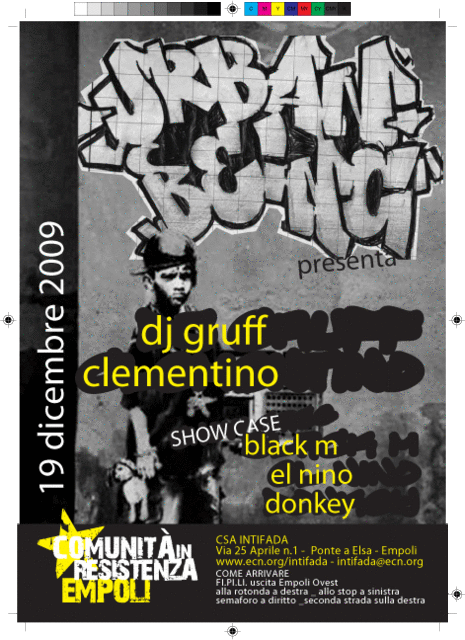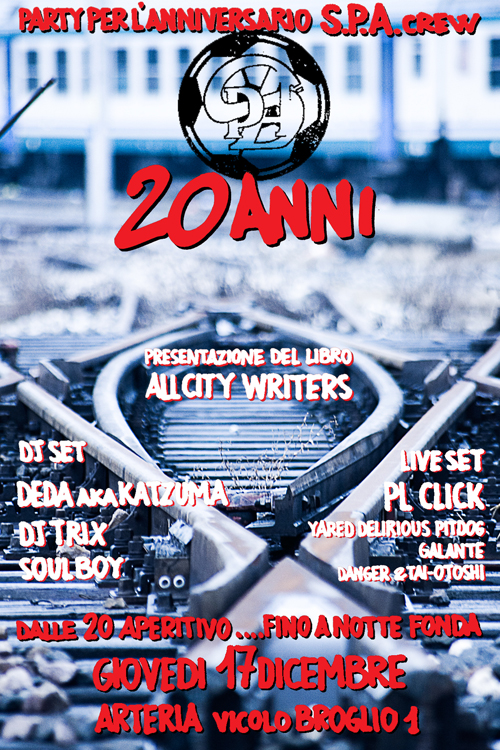Raw Dope Posse – listen to my turbo (1988)
Raw Dope Posse – listen to my turbo (1988)
Raw Dope Posse – listen to my turbo (1988)
source: http://www.youtube.com/watch?v=z73CcodfT_w
This is a hot video of the legend. Pure hip hop
Pete Rock on wikipedia (en) — http://en.wikipedia.org/wiki/Pete_rock
Pete Rock on wikipedia (it) — http://it.wikipedia.org/wiki/Pete_Rock
Nuovo volume sulle origini della cultura hip hop edito da Agenzia X a cura di U.net. Il libro è scaricabile gratuitamente in formato pdf dal sito della casa editrice.
fonte: http://www.hiphopreader.it/renegades-of-funk/
 Renegades of Funk
Renegades of Funk
rappresenta un viaggio indietro nel tempo; un viaggio che vi
catapulterà nel Bronx della prima metà degli anni settanta, agli albori
della cultura Hip Hop. Il testo è un vivace affresco di riflessioni,
indagini storiche, interviste e contributi dei protagonisti; un viaggio
nelle strade del Bronx di oggi nel tentativo di ricostruire le
dinamiche e gli accadimenti di quei giorni attraverso ricordi,
esperienze e riflessioni; un percorso d’immersione totale in un’epoca
dimenticata dai più, idolatrata da pochi fan hardcore, e della quale vi
sono pochissime testimonianze scritte e ancor meno fotografiche.
Renegades of Funk racconta delle gang, delle feste di DJ Kool
Herc, di Bambaataa e di Grandmaster Flash, dell’inclusione di forme
espressive come il DJing, Graffiti Writing, Bboying e MCing in un unico
movimento culturale in lenta ma inesorabile conquista della scena
artistica e underground di Manhattan. Renegades of Funk racconta dei
primi dischi e della rapida commercializzazione che stravolgerà lo
spirito iniziale, ma anche dell’enorme debito dell’Hip Hop nei
confronti della disco e del punk.
Renegades of Funk è anche una storia musicale. L’esperimento
intende superare i limiti imposti dalla pagina scritta, contaminando
altre forme espressive, per creare un percorso musicale che
ripercorrerà le principali tappe dell’evoluzione di questa cultura.
Dallo skit di Popmaster Fabel:
Mi svegliavo la mattina durante il periodo estivo pregando il
Signore affinché ci fosse una Jam! Verso le tre o le quattro del
pomeriggio iniziavi a sentire la musica rimbombare tra i project anche
a svariati isolati di distanza.
Dall’intervista a TRAC2:
In quel periodo, l’abilità come writer, come Bboy, come DJ o MC
garantiva la popolarità e la reputazione nel quartiere. Si guadagnava
lo status di celebrità del ghetto. Cercavamo proprio questo e lo
potevamo ottenere solo attraverso la competizione.
TKID170:
Le feste nelle strade erano una celebrazione. Dai graffiti, alla
Danza, dal DJing all’MCing e nelle jam cercavamo di affermare la nostra
identità! Siamo qui! Esistiamo anche noi! Non ci facevano entrare nei
club per via del nostro abbigliamento, del look e dell’età. Così
iniziammo a fare i nostri party.
The Chief Rocker Busy Bee:
Dicono che la musica calmi gli animi insoddisfatti e ribelli e
questo è ciò che abbiamo cercato di fare all’epoca: calmare i nostri
fratelli con la musica per evitare che facessero delle sciocchezze che
avrebbero pagato per il resto della loro vita. Suonavamo e la gente
ballava, si divertiva godendosi il momento senza pensare al peso della
vita nel Bronx.
source: http://www.youtube.com/watch?v=GxZuq57_bYM
The Winstons – Amen, Brother ( http://www.myspace.com/amenbros )
Label : (Metromedia Records, BMI)
Biography by Ron Wynn & Bruce Eder :
A
Washington, D.C.-based soul act led by Richard Spencer, the Winstons
signed to Curtom in early 1968 and lasted there for one single, the
rousing "Need a Replacement." They had a sound that was somewhat
similar to the Impressions, but were unfortunate enough to have signed
with Curtom before the label had national distribution, and the single
never got the play it should have. A year after leaving Curtom, they
hit for the Metromedia label with a huge single called "Color Him
Father," which became a Top Ten R&B and pop hit, just missing
number one on the R&B list, and also earned a Grammy for Best
R&B Song. It was both a great tribute number and outstanding lead
vocal from Richard Spencer, along with Ray Maritano, Quincy Mattison,
Phil Tolotta, Sonny Peckrol, and G.C. Coleman. Mattison and Coleman
were veterans of Otis Redding’s band. The Winstons eventually toured as
the backup band for the Impressions, but never again made any noise on
the charts.
The Winstons line-up included:
Gregory C. Coleman (vocals, drums)
Ray Maritano (vocals, alto saxophone)
Quincy Mattison (vocals, lead guitar)
Sonny Pekerol (vocals, bass guitar)
Richard Lewis Spencer (lead vocals, tenor saxophone)
Phil Tolotta (second lead, organ)

Calling Out Around the World: Motown Turns 50
These Are the Breaks: The Motown Sound’s Influence on Hip-Hop Sampling
[28 January 2009]
Talking
about the art of sampling without including Motown is like talking
about soul music without Otis Redding or rock ‘n’ roll without Elvis—it
just doesn’t quite complete the puzzle. The house that Berry Gordy
built has been integral to the conception of hip-hop, its
implementation of sampling, and the growth patterns of a music that
advanced the urban streets of New York and slowly but surely took over
the streets of the world.
While sampling has held its niche in the underground of hip-hop,
legal problems have forced it out to the forefront, unless an artist
with stature like Kanye West or Q-Tip takes the time to get his samples
cleared. For any influential group in the hip-hop game, specifically in
the early 1990s, Motown’s stamp of approval and its variety of
subsidiaries were undeniably influential. Everyone from alternative
groups such as A Tribe Called Quest and De La Soul, to critical
darlings like Common and the Roots, to mainstreamers like Tupac and
Biggie have all had their hands in Hitsville U.S.A. This is partly due
to the volume of records Gordy’s empire was pressing by the late
‘60s—enough for every beat digger to get his fair share of obscure
breaks.
Although said obscure breaks often dominate, some of Motown’s best
sellers would go on to provide the foundation for some of the most well
known breaks. If it was a big seller the first time around, might as
well try it again, right? The originators of mainstream hip-hop, Run
DMC, found chops in the Temptations’ classic “Papa Was a Rolling
Stone”, while Public Enemy used some of the band’s lesser known cuts,
such as “Psychedelic Shack” and “I Can’t Get Next to You”. There are a
number of reasons why these prominent hip-hop artists found comfort in
the grooves of the Motown sound.
For one, Motown always stuck to the K.I.S.S. (Keep It Simple,
Stupid) philosophy. One of the most important aspects of a legendary
break comes from its ability to be used in repetition; if it becomes
too complex, then it is less likely to work its way into the mind of
its listeners. A strong backbeat begets an optimum break, and Motown
had strong backbeats in spades. The Motown Sound always revolved around
the backbeat of drummers like William “Benny” Benjamin, Richard
“Pistol” Allen, and Uriel Jones to carry everything else forward, and
it was typically accented by Jack Ashford’s tambourine and the rhythmic
basslines carried by the legendary index finger of James Jamerson.
The collective of musicians known as the Funk Brothers forever
changed the face of music up until Motown’s move from Detroit to Los
Angeles in the early ‘70s. Both throughout their heyday and through the
art of sampling, the Funk Brothers’ style of layering several guitar
lines atop a syncopated drummer affords their records a sound unlike
anyone else’s. When sampling drums, the feel and volume are of utmost
importance—this is why John Bonham has always been one of the legendary
sampled drummers. Though Benjamin, Allen, and Jones didn’t pound the
kit, they played it with a pure finesse that, when syncopated with an
overdub of the same break, truly comes to life. For example, the drums
on the Four Tops’ classic “Reach Out I’ll Be There” are crisp and at
the front of the mix, something that legendary producer Norman
Whitfield had a golden ear for.
The orchestral arrangements used to elaborate many of the classics
on Motown became another backbone in the hip-hop sound. Providing
atmospheres to a beat unlike any guitar or bass could ever achieve, the
sweet sound of strings layered behind thick beats led an entire new
generation of hip-hoppers to different sonic territory. Elements like
the string arrangements on Motown records, the horn arrangements that
followed James Brown, and the sparseness found in jazz contemporaries
such as Miles Davis, Charlie Mingus, and Sonny Rollins helped put
hip-hop on a new scale. It allowed the beats to take on a life of their
own, creating atmospheres to get lost in behind the lyrics. This may
have been what opened up a world of beat records and gave labels like
Stones Throw a lifelong supply of influence. It was about getting past
drums alone and into a world of atmospheres where the beats no longer
needed lyrics to be a creative force.
While we could go into a book-long discussion on the quintessential
samples used by artists of Motown songs and artists, that could become
irrelevant to a certain extent. What’s important to realize is how the
aesthetic territory explored by the Funk Brothers, Whitfield, Gordy,
and the wonderful recording artists for the beloved Detroit label and
its subsidiaries influenced the aesthetic process in the world of
sampling. The sonic territory explored in the Motown lab is a
cornerstone in the similar territory explored decades later by a new
generation of African-American innovators. For one, the late J Dilla,
producer of classics by A Tribe Called Quest, the Pharcyde, and
countless other underground icons, is a man of Detroit blood and holds
the sounds of Motown near and dear to his heart and sound. It may not
have been his samples per say, but his aesthetic approach is very
similar to that of the Motown Sound. His beats have always been based
on the K.I.S.S. method, and his drums always crisp (even when they were
raw-sounding drums).
Motown will forever stand on its own as a timeless entity in the
realm of popular music. For a younger generation, knowing about Gordy’s
legacy may not be at the top of one’s priority list. But for a
generation of hip-hoppers that have been exposed to the music of Marvin
Gaye, the Temptations, Stevie Wonder, et al through a new
styling of music suited to their tastes, the sound of the cut-up beat
is one that sends them headlong into a world of wax. Through this, they
are exposed to a sound unlike any other, a sound that is gracing the
radio each and every day and staying relevant through a new medium—one
method sustaining another.
Calling Out Around the World: Motown Turns 50
—end of phile—
fonte: http://www.youtube.com/user/broolkeez
My channel is mainly aimed at the art of break digging. I try to help
guide those up and coming diggers / producers to that perfect break. I
also bring light to some of the most hunted breaks in the history of
digging. I only show, use & play original, 1st run pressings of all
records. I am proud to say that I am DO NOT use bootlegs or reissues. I
feel any one can go buy a recently pressed piece of vinyl, but only a
true beat head will take years and what ever else to find that one
original copy. So, I hope my vieos and collection is viewed and
appreciated by the world and all those who eat, sleep & shit music.
Peace, Love & Break Beats!!
source: the MrSP1200 youtube channel:
http://www.youtube.com/watch?v=lWqmXzZ5kqc
Stills I took at the Universal Zulu Nation Anniversary Jam 2009, NYC.
I made the beat circa 1994 on the mighty 12 bit grit machine
"THE EMU SP1200".
Zulu chants overdubbed live through a ROLAND SPACE ECHO.
Peace to all Zulu’s, B-boys & B-girls worldwide who still love & represent True School Hip-Hop & Raw Funk culture,
KEEP THE FAITH!
stasera sabato 19 dicembre 2009 DJ Gruff e Clementino MC si esibiranno al CSA Intifada di Ponte a Elsa

CSA INTIFADA
via 25 aprile 1 – Ponte a Elsa – Empoli
http://www.ecn.org/intifada – intifada [at] ecn.org
come arrivare
superstrada Firenze Pisa Livorno uscita Empoli Ovest
alla rotonda a destra _ allo stop a sinistra
semafoto a dritto _ seconda strada sulla destra
link:
http://www.gruff.it/ – sito ufficiale di Gruffetti
party per l’anniversario S.P.A. Crew
20 anni
PRESENTAZIONE DEL LIBRO:
ALL CITY WRITERS — http://www.allcitywriters.com/
live set
CAMELZFINEZZACLICK: YARED Delirious Pitdog, GALANTE, DANGER e TAI-OTOSHI
dj set
DEDA, DJ TRIX, SOUL BOY
dalle 20.00 aperitivo… fino a notte fonda
giovedì 17 dicembre
presso Arteria – vicolo Broglio 1, Bologna

Scratchbusters, ovvero DJ Drugo e Bioshi Kun, sono primi classificati nella categoria Team ai campionati mondiali di scratch IDA (International Dj Association, ex ITF http://www.ida-dj.com/) 2009 a Cracovia, Polonia.
un saluto a Bioshi, a Drugo, a PJ e a tutta la crew dei Looperatoritaliani